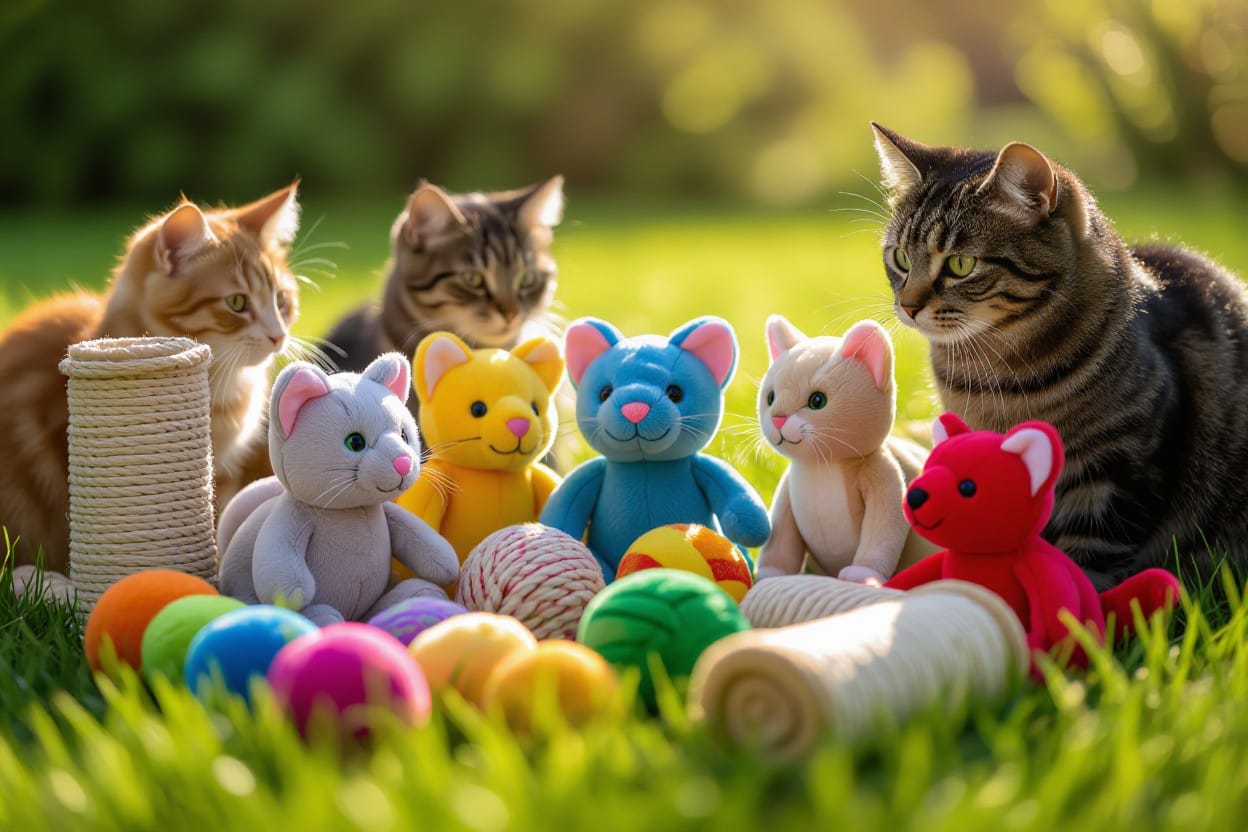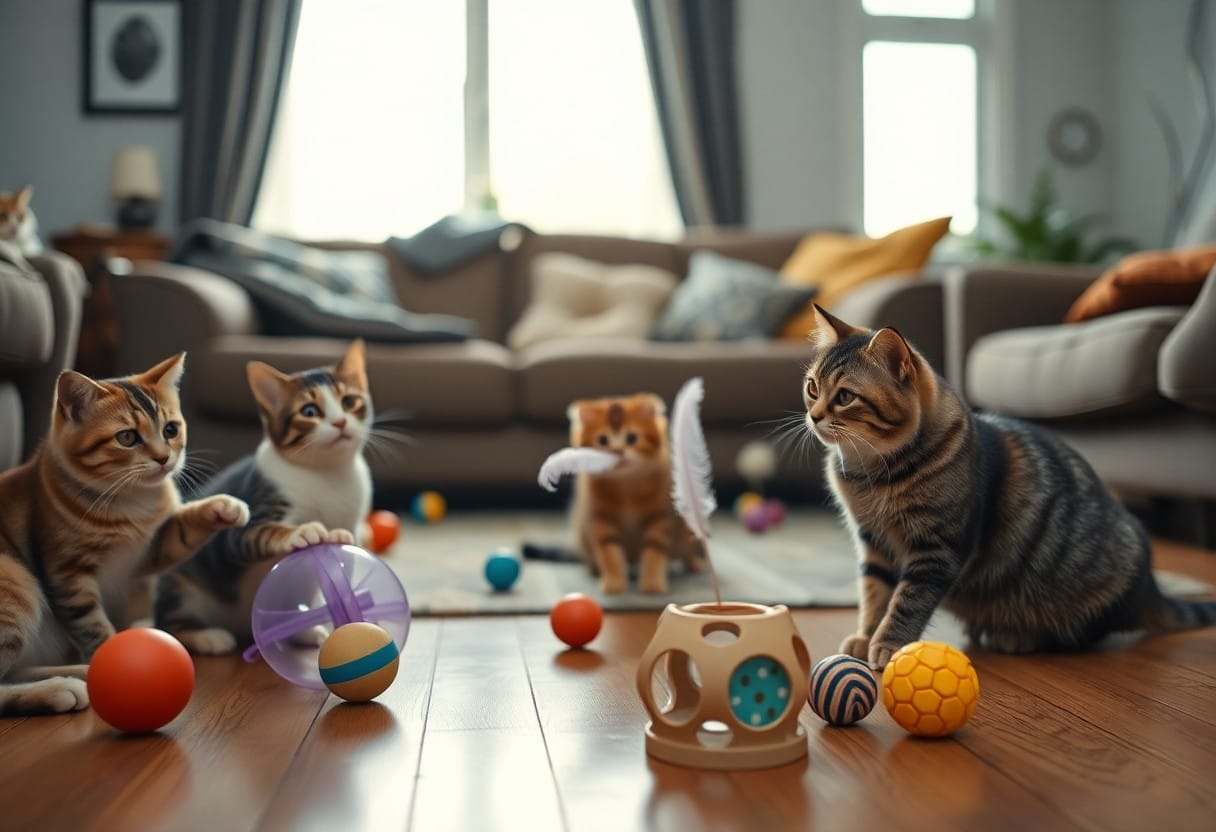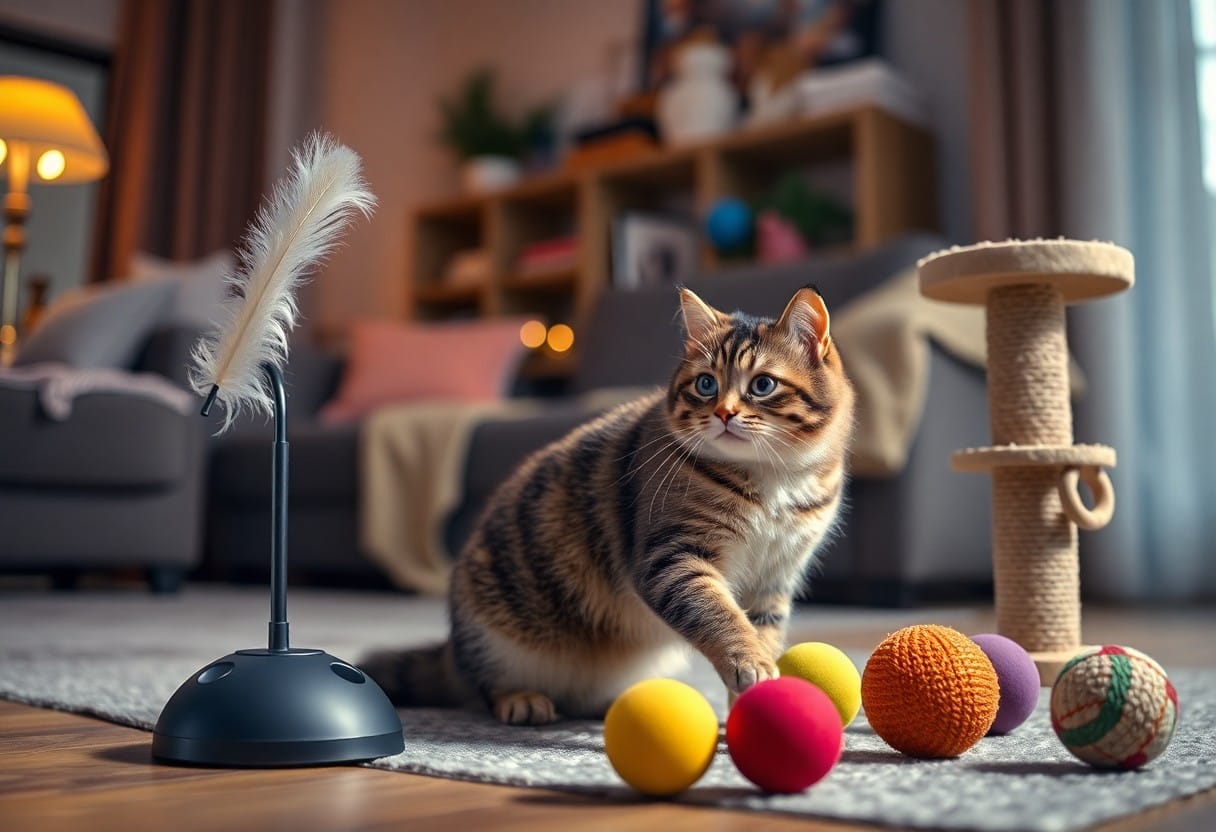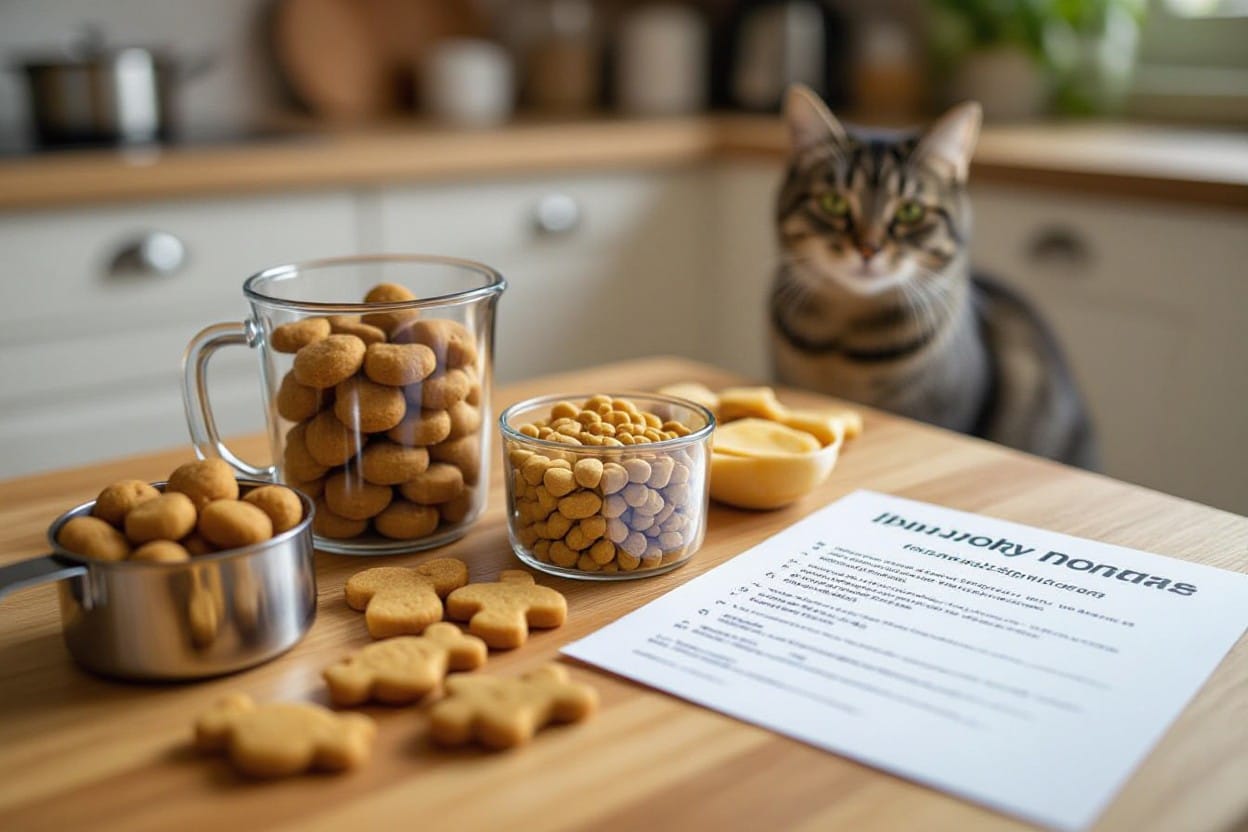It’s necessary to understand the ins and outs of catnip toys to ensure your feline friend stays entertained and happy. Catnip is a natural herb that can induce a temporary sense of euphoria in cats, making it a popular choice for toys. However, not all cats are affected by catnip, so it’s important to know if your cat is one of the many who enjoy this herb. When choosing catnip toys, consider the quality of the catnip used, as fresher and more potent catnip will likely have a stronger effect on your furry companion.

Understanding Catnip
What Is Catnip?
Any cat owner knows the allure of catnip on their feline companions. But what exactly is catnip? Catnip is a herb from the mint family, scientifically known as Nepeta cataria. It contains a compound called nepetalactone, which is what triggers the typical response in cats.
The Science Behind the Feline Attraction to Catnip
An intriguing aspect of catnip is how it affects different cats. When cats smell or ingest catnip, it interacts with the sensory neurons in their noses, sending signals to the brain. This stimulates various regions, including the hypothalamus and amygdala, which are involved in emotional and behavioral responses.
Catnip sensitivity is genetic, and not all cats are affected by it. It is estimated that around 50-70% of cats are responsive to catnip, with kittens not typically showing a reaction until they are around 3-6 months old. Interestingly, sensitivity to catnip is an inherited trait, meaning it can run in cat families.
Catnip Varieties and Potency
A variety of catnip plants exist, ranging in potency and appeal to cats. While Nepeta cataria is the most common type, other species like Nepeta mussinii and Nepeta faassenii also produce nepetalactone. Some catnip varieties are more potent than others, with the freshness and quality of the catnip affecting its potency.
Potency
In terms of catnip, potency can vary greatly depending on factors such as how it’s grown, harvested, and stored. Typically, catnip that is harvested before flowering is considered to be more potent. The oils responsible for the characteristic effects can degrade over time or due to exposure to light and air, so storing catnip in a cool, dark place is imperative for maintaining its potency.
Plus, some cat toys or products may contain a blend of catnip and other scents or textures to appeal to a wider range of cats. Understanding the potency of catnip and how to preserve it will ensure that your feline friend gets the most enjoyment out of their catnip-infused playthings.

Types of Catnip Toys
Your feline friend deserves the best when it comes to playtime, and catnip toys are a great way to keep them engaged and happy. There are various types of catnip toys available to suit different preferences and play styles. Understanding the different options will help you choose the best ones for your cat’s enjoyment.
| Plush Catnip Toys | Interactive Catnip Toys |
| Refillable and DIY Catnip Toys |
Plush Catnip Toys
An exciting addition to your cat’s playtime, plush catnip toys provide the thrill of hunting and capturing their prey. These toys are typically filled with premium catnip to entice your feline friend and keep them engaged for hours. The soft texture of the plush toy also offers comfort during cuddle sessions.
An necessary thing to remember with plush catnip toys is to monitor your cat’s playtime to prevent overstimulation. It’s important to rotate these toys to maintain their novelty and effectiveness in capturing your cat’s interest. The safety of the toy is paramount, so always ensure there are no loose parts that could be ingested by your cat.
Interactive Catnip Toys
For a more engaging play session, interactive catnip toys are a fantastic choice. These toys come in various forms, such as teaser wands, puzzle toys, and treat dispensers, encouraging your cat to be active and use their natural hunting instincts. Interactive catnip toys are not only mentally stimulating but also provide physical exercise for your feline companion.
It is necessary to supervise your cat during playtime with interactive catnip toys to ensure their safety and prevent any accidents. These toys can help strengthen the bond between you and your cat as you both participate in the play session together. Engaging in interactive play regularly can help prevent boredom and behavioral issues in your cat.
Refillable and DIY Catnip Toys
Refillable and DIY catnip toys offer a customizable option for keeping your cat entertained. These toys allow you to refresh the catnip scent, ensuring your cat remains interested in the toy over time. Additionally, creating your DIY catnip toys can be a fun and rewarding activity for both you and your cat.
Any catnip toy that is refillable provides an eco-friendly and cost-effective solution compared to single-use toys. Refillable toys also give you the flexibility to adjust the amount of catnip based on your cat’s preferences. When making DIY catnip toys, be sure to use safe materials that are durable and non-toxic for your cat.
Safety Considerations
Choosing Safe Catnip Toys
Toys
When deciding on catnip toys for your feline friend, it is crucial to prioritize safety. Opt for toys that are made of high-quality materials that are durable and non-toxic. Avoid toys with small parts that could be easily chewed off and swallowed, as these pose a choking hazard. Additionally, choose toys that are the appropriate size for your cat to prevent any accidental ingestion.
When to Replace Catnip Toys
With
It is important to regularly assess the condition of your cat’s toys to ensure they are still safe for play. Over time, catnip toys can become worn out or damaged, presenting potential risks to your cat. For instance, if a toy becomes torn or has loose threads, it is time to replace it to prevent any harm to your cat during playtime.
Signs of Overstimulation
Toys
It is imperative to be mindful of your cat’s behavior during play with catnip toys to watch for signs of overstimulation. Common signs include excessive vocalization, dilated pupils, aggressive behavior, or restlessness. If you observe any of these signs, it is best to remove the toy and allow your cat to calm down to prevent any stress or discomfort.
Maximizing Enjoyment and Play
Introducing Catnip Toys to Your Cat
Not all cats react to catnip, but for those that do, introducing catnip toys can be a game-changer in their play routine. When offering a catnip toy for the first time, observe your cat’s reaction. They may sniff, paw, lick, or roll around with the toy. Some cats may become more playful and energetic, while others may become more mellow and relaxed. Whichever way your cat reacts, ensure they are supervised during play with catnip toys to monitor their behavior and prevent any overstimulation.
Creating an Engaging Play Environment
Play is an crucial part of a cat’s well-being, and creating an engaging play environment can enhance their overall happiness. To maximize enjoyment and play, consider incorporating a variety of toys that cater to different play styles. Interactive toys like feather wands, laser pointers, and treat dispensers can keep your cat mentally and physically stimulated. Rotate the toys regularly to maintain your cat’s interest and prevent boredom.
Plus, designating specific play areas in your home, such as window perches or cozy nooks with toys, can encourage your cat to engage in play activities. Providing scratching posts, climbing trees, and hiding spots can also enrich their play environment and allow for natural behavior expression. Remember to reinforce positive play behaviors with praise, treats, or extra playtime to further encourage their enjoyment.
Alternatives to Catnip
Keep your feline friend entertained and happy with alternatives to catnip. While catnip is a popular choice, some cats may not react to it the way others do. It’s always good to have a few options on hand to see what your cat prefers. Two common alternatives to catnip are silver vine and other herbal attractants.
Cats and Silver Vine
Any cat owner looking for a catnip alternative should consider trying silver vine. Silver vine is a plant that grows in the mountainous regions of Asia and has been known to elicit similar reactions to catnip in cats. This plant contains two compounds – actinidine and dihydroactinidiolide – which can cause a euphoric response in cats. Some cats who do not respond to catnip may show interest in silver vine, making it a great alternative to try.
Other Herbal Attractants
For cat owners seeking additional herbal options, there are several other herbal attractants that can provide a stimulating experience for cats. Valerian root, honeysuckle, and lemon balm are some examples of herbs that can attract and excite cats. These herbs can be used in toys or as a sprinkle on scratching posts to encourage play and exercise in cats who may not be interested in catnip.
Vine catnip, silver vine, valerian root, honeysuckle, and lemon balm are just some of the many alternatives to traditional catnip that can help keep your feline friend happy and engaged. Experimenting with different options can help you find the perfect herbal attractant that your cat will love.

The Benefits of Catnip Toys
Physical Benefits for Your Cat
With the use of catnip toys, your feline friend can enjoy various physical benefits. Playing with these toys can help your cat stay active and engage in much-needed exercise. This physical activity is not only good for your cat’s overall health but also helps prevent obesity and joint problems. Catnip toys also encourage your cat to stretch, pounce, and chase, promoting agility and flexibility.
Emotional and Behavioral Benefits
On the emotional side, catnip toys can provide your cat with mental stimulation and enrichment. These toys can keep your cat entertained and prevent boredom, reducing the likelihood of destructive behavior. The effects of catnip on your cat’s brain can also help reduce stress and anxiety, promoting a sense of calm and well-being.
Emotional and Behavioral Benefits
Final Words
Upon reflecting on all the information provided about catnip toys, it is clear that these simple toys can bring a lot of joy to our feline friends. Understanding the effects of catnip, how to properly introduce these toys, and the different types available are all key components to ensuring a happy and healthy cat.
By following the guidelines outlined in this article, you can provide your cat with hours of entertainment and mental stimulation. Remember to observe your cat’s behavior and preferences when selecting catnip toys, and always supervise their playtime to ensure their safety. With the right knowledge and approach, catnip toys can be a wonderful addition to your cat’s playtime routine.
FAQ
Q: Why should I give my cat catnip toys?
A: Catnip toys can provide mental and physical stimulation for your cat, helping to alleviate boredom and reduce stress. It can also encourage exercise and play, contributing to your cat’s overall well-being.
Q: How do catnip toys work?
A: Catnip contains a compound called nepetalactone that binds to receptors in a cat’s sensory neurons, resulting in a behavioral response. Not all cats are affected by catnip, as sensitivity is genetic and occurs in about 50-75% of cats.
Q: Are catnip toys safe for my cat?
A: Catnip is non-toxic and generally safe for cats to enjoy. However, moderation is key, as excessive exposure to catnip can lead to temporary behavioral changes like hyperactivity or aggressiveness. Always supervise your cat during playtime with catnip toys.
Q: How often should I give catnip toys to my cat?
A: To prevent habituation, it’s recommended to offer catnip toys to your cat no more than once or twice a week. Rotating toys and providing variety in play can help maintain your cat’s interest and response to catnip.
Q: How can I tell if my cat is enjoying their catnip toy?
A: Cats that are sensitive to catnip will exhibit behaviors like rolling, rubbing, purring, leaping, and increased playfulness when exposed to catnip. If your cat shows these reactions, it’s a sign that they are enjoying their catnip toy.















